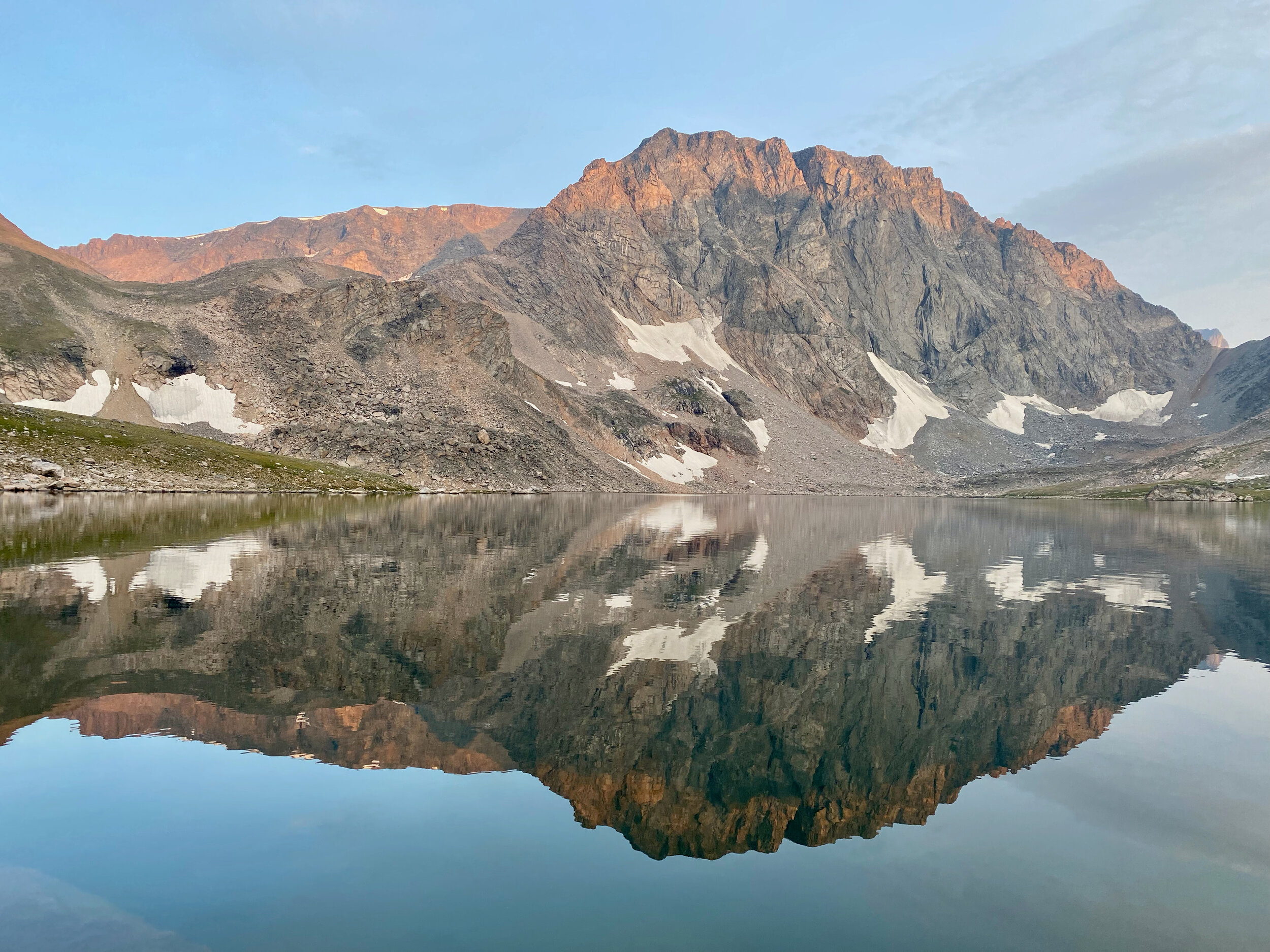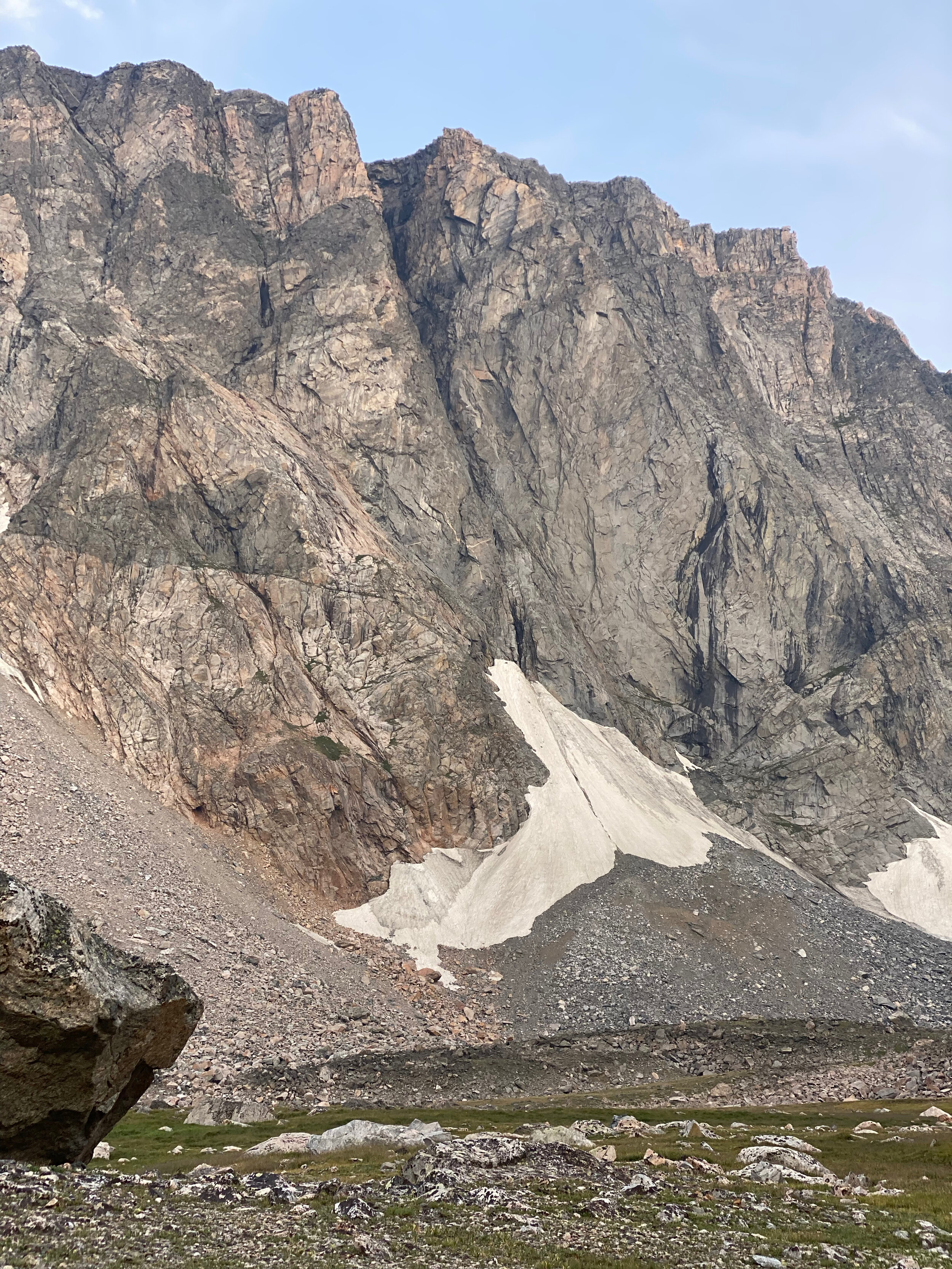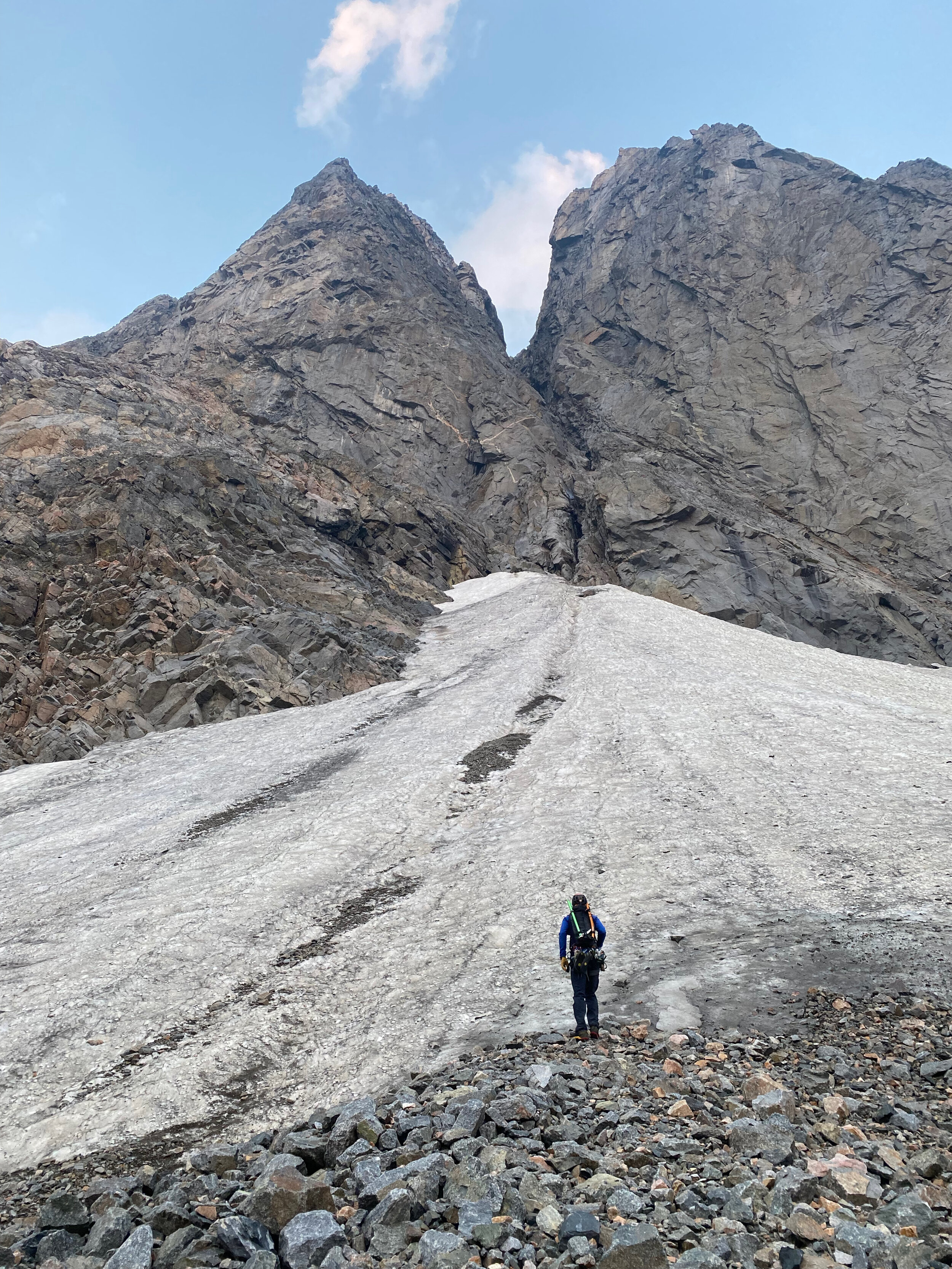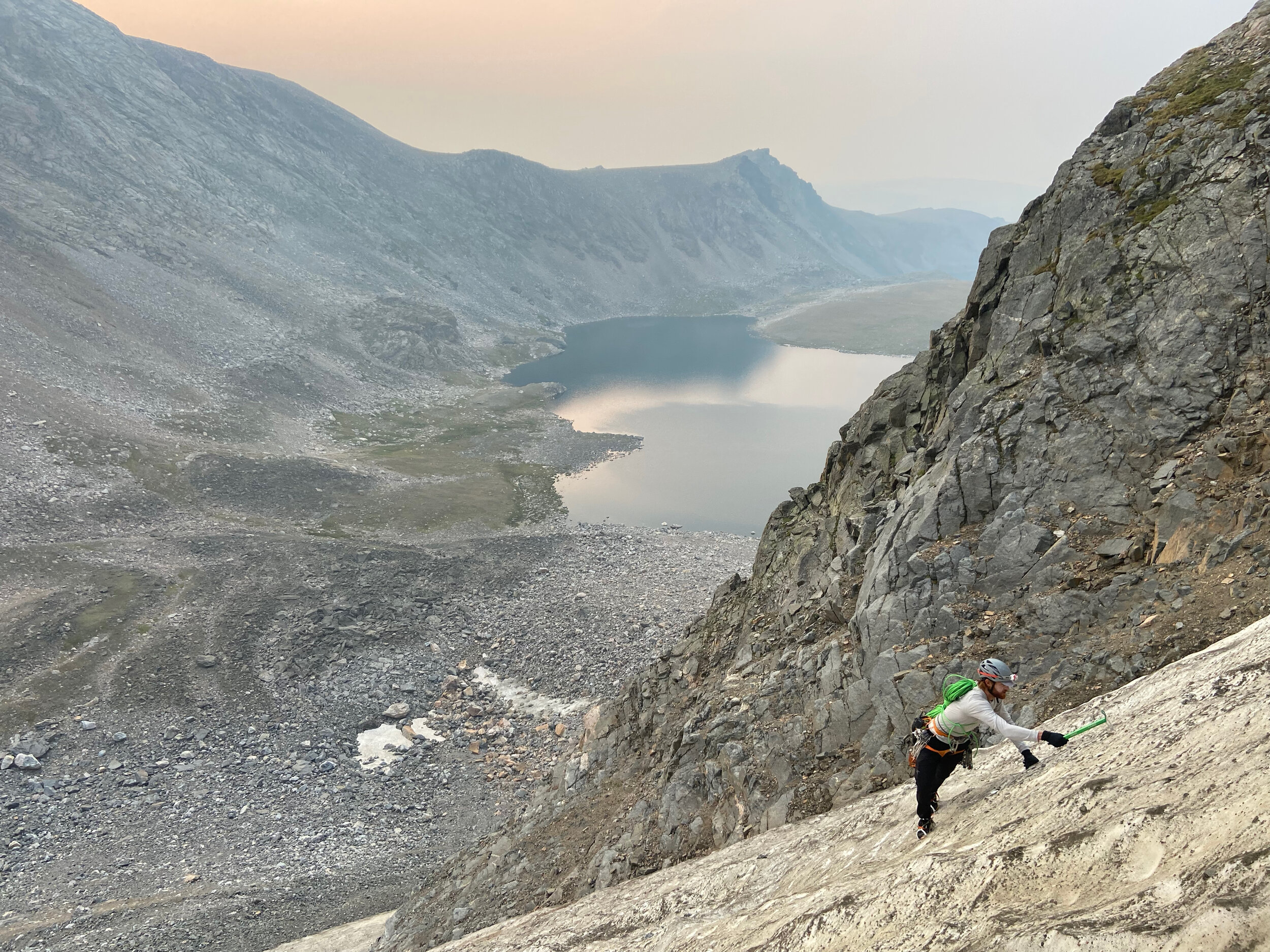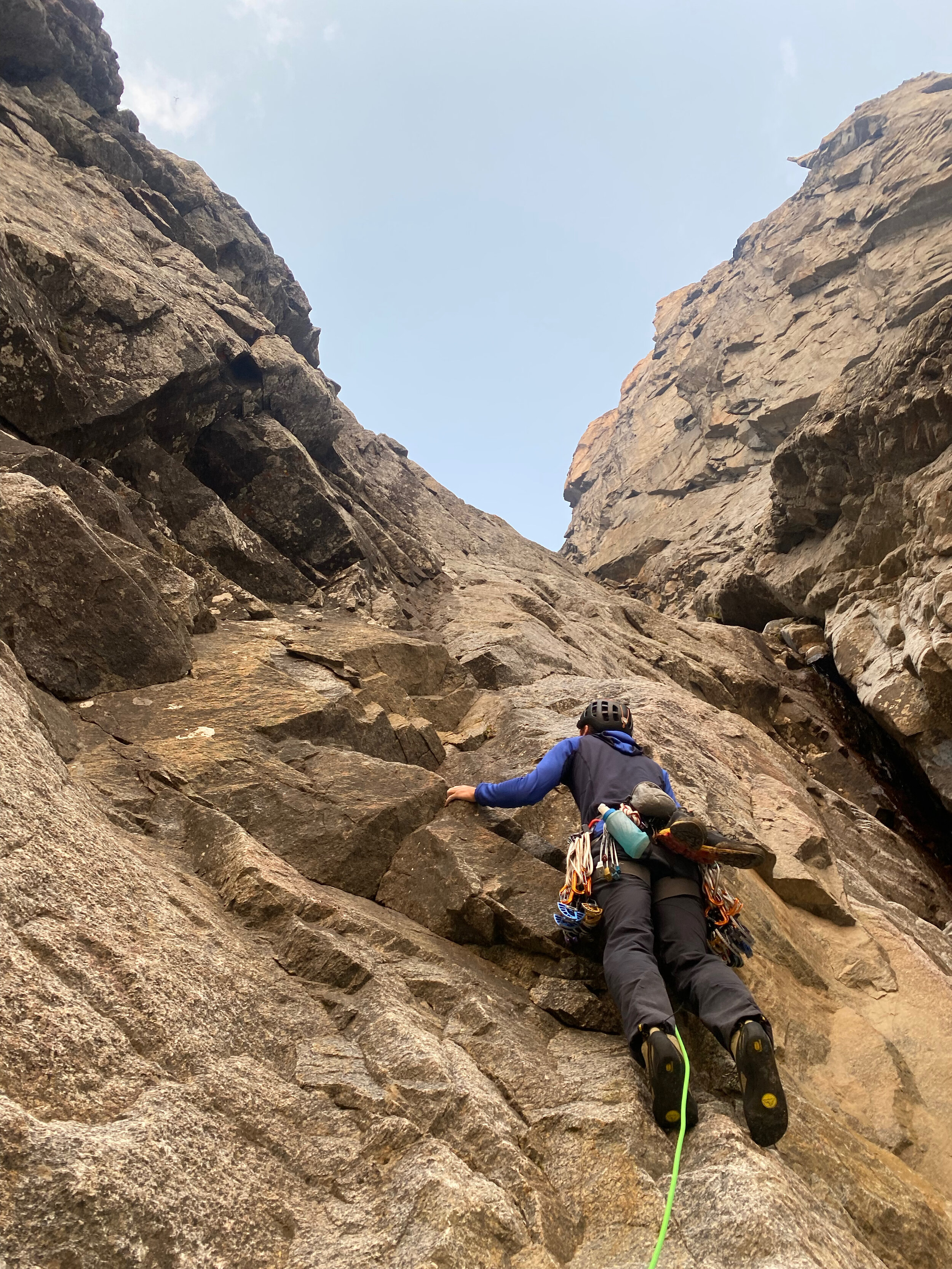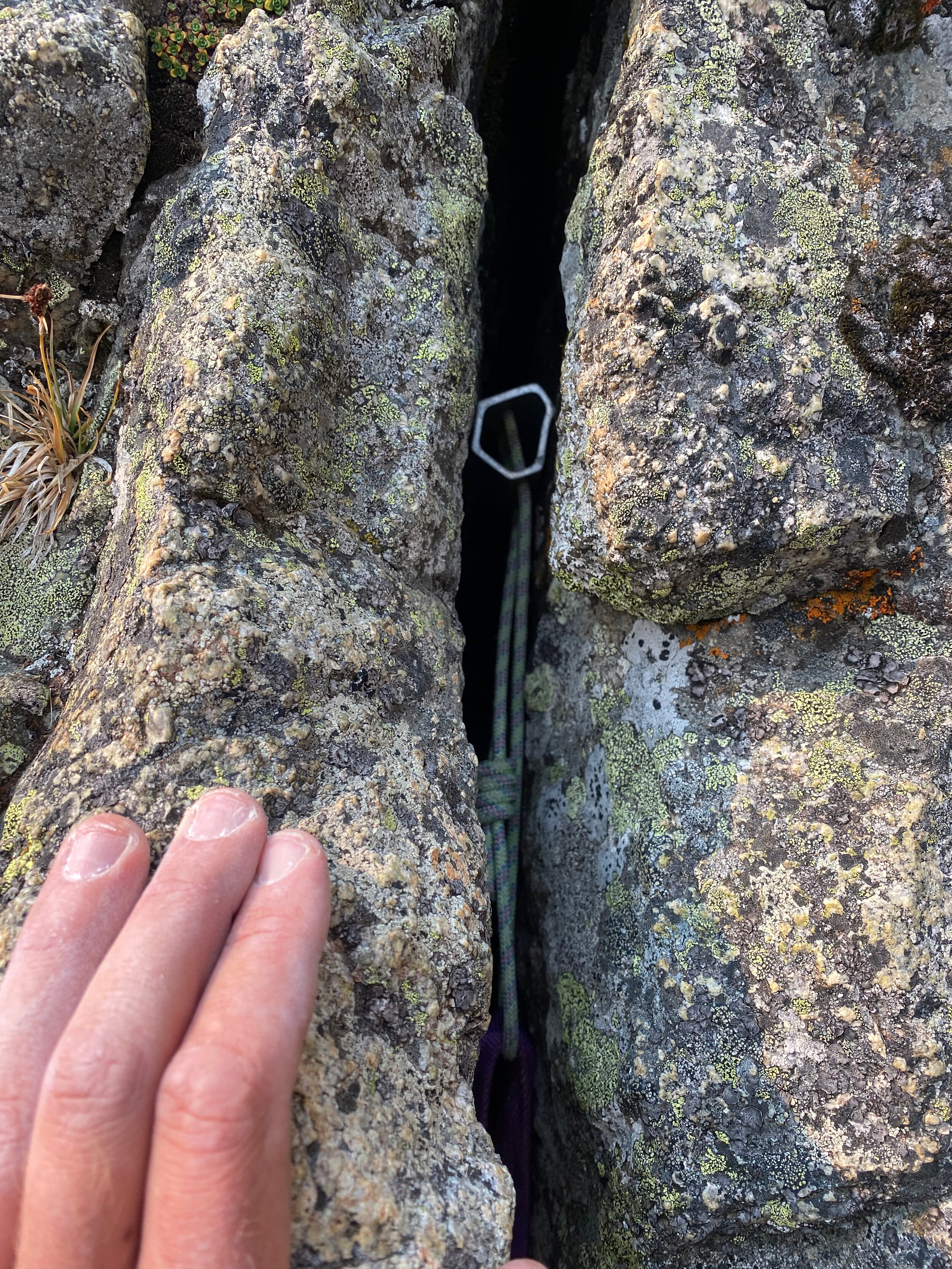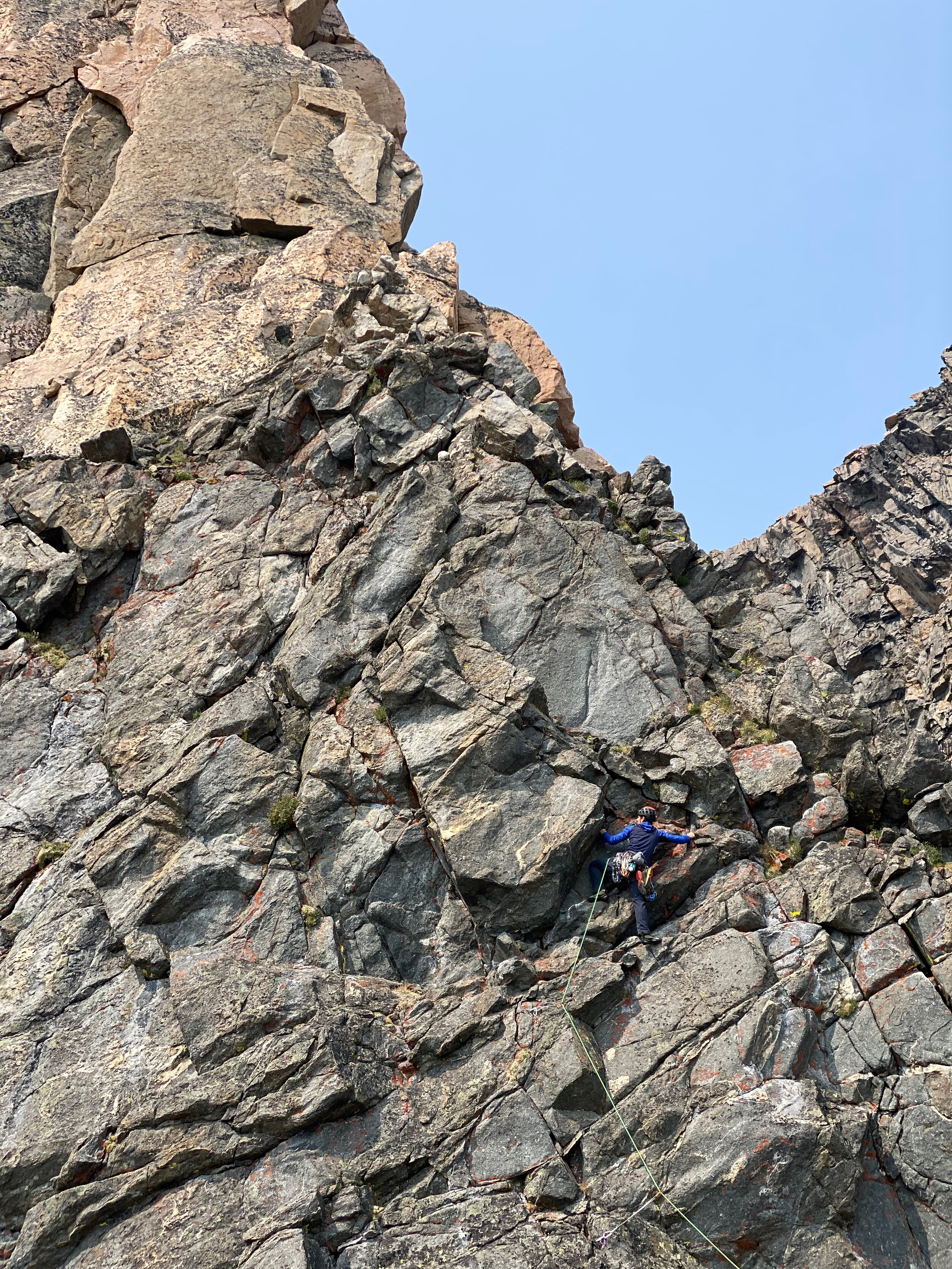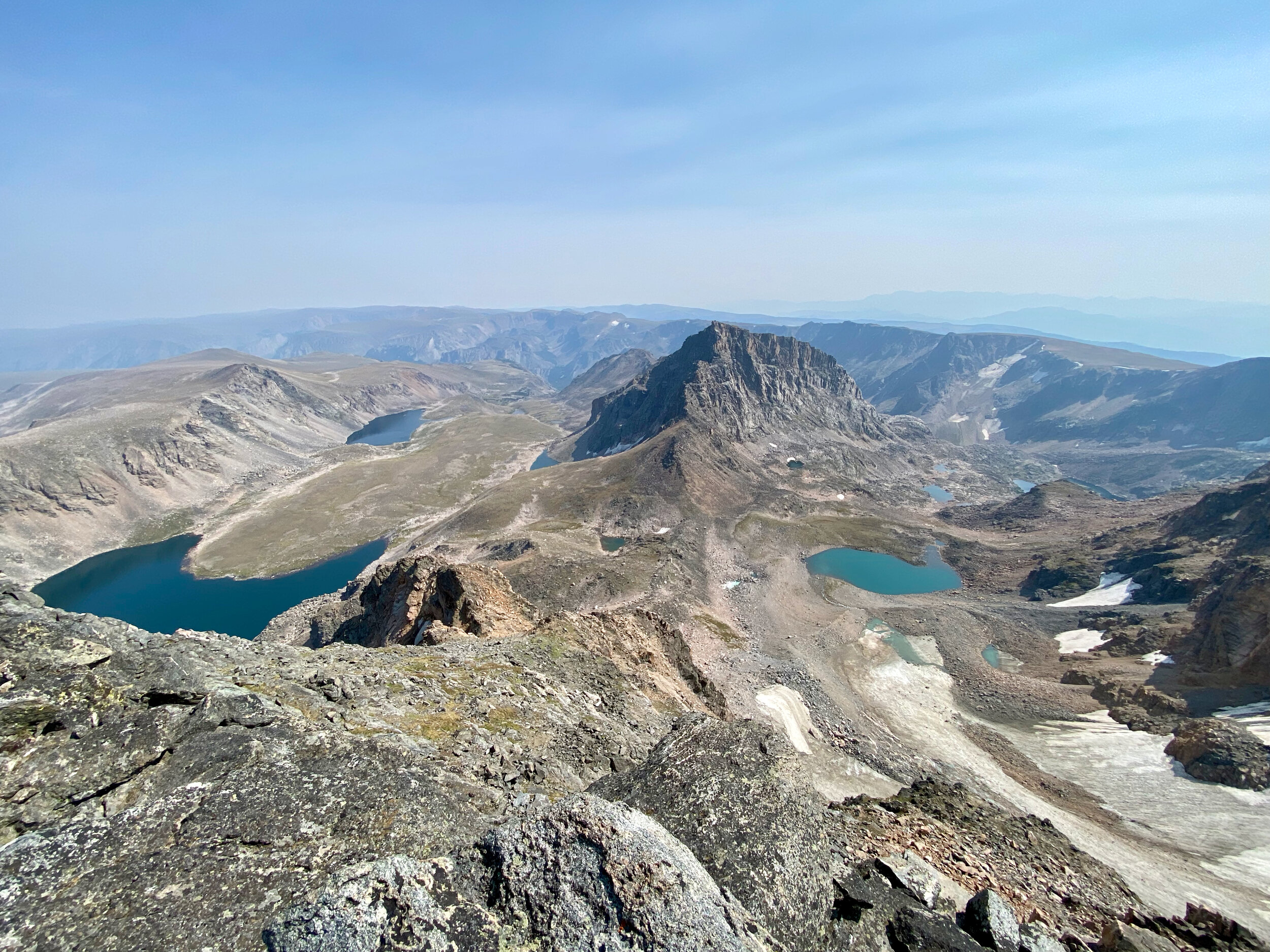Lunar Arete - Spirit Mountain (1500', 5.7, III)
Beartooth Range, MT
Spirit Mountain reflecting on Moon Lake
Date: August 15, 2021
Strava Links: https://www.strava.com/activities/5800787439 https://www.strava.com/activities/5800810574
Trip Report:
After one failed attempt, I returned a month later with Tucker to give Lunar Arete another go. The long, moderate climbing of Lunar Arete appealed to me and the lack of information on the internet added to the allure. Tucker was fresh off a one day push of the Grand Traverse in the Tetons so I knew he would be a great partner for a long-ish alpine objective. We picked a day pretty far in advance that worked for both of our schedules and thankfully the weather was forecasted to be ideal for an all day climb. The only downside was the date we picked was the day after the Bridger Ridge Run so I would be climbing (and approaching) with very heavy legs.
After the race, I rushed to pack up the truck and headed to pick up Tucker. After some Subway in Red Lodge, we arrived at the Glacier Lake Trailhead around 7 pm. After a beer and sorting through gear, we hopped in the camper for a few hours of sleep before the 3 am alarm. I never sleep very well the night before waking up early for an alpine start. I tend to wake up several times throughout the night wishing it was time to wake up and get going! I guess that’s a sign I love this shit. After some coffee, we were on the trail by 4 am. You start out on the Glacier Lake trail for roughly ¾ of a mile before leaving the trail for the social trail towards Moon Lake. For an unmarked trail, its generally very good and there’s virtually no bushwhacking. The approach description Matt Lemke wrote on Summit Post is great and will get you to Moon Lake without issue. We dropped my pack at the base of Moon Lake. We were planning on bringing Tucker’s smaller pack on route and having the follower carry it. We made our way around the south side of Moon Lake and were at the snow below the base of Lunar Arete shortly after sunrise. I threw on my strap on Petzl Leopard crampons over my approach shoes and started climbing the 500 feet snow of guarding the base of the route. Somewhat expected for a snowfield in August, the snow was basically alpine ice and I was having to swing my aluminum, Camp Corsa ice axe as the snow was far too hard to plunge. The sideways walk and swinging my one ice axe was a new technique to me, but it never felt too sketchy. Tucker somehow managed to ascend the 50 degree slope in MicroSpikes which was very impressive. On my previous attempt, we started on the slab climbers left of the snow to avoid having to ascend the snow which proved to be a mistake. We wasted several hours traversing over as the terrain was slabby (shocker) and hard to protect. I would highly recommend biting the bullet and bringing whatever gear you need to feel comfortable climbing the snow to get to the base of the arete.
Tucker took the first pitch and climbed to the right of the Arete and into the Central Chimney before finding a weakness to hop back on the Arete proper. I won’t go into depth describing the climbing pitch by pitch, because frankly it all sort of blended together. The description of the route in Select Alpine Climbs of Montana is “This alpine rock gem contains 10-12 pitches with many easy fifth class pitches with 3-4 good ones. Stay close to the arete but wander left when necessary”. While very short, I would say the description proved to be very accurate. Most of the climbing was in the 5.5-5.6 range with plenty of isolated 5.8 moves sprinkled throughout. We attempted to stay on the Arete whenever possible but traversed left when needed to find something climbable. We swapped leads and simul climbed a little but 10-12 pitches seems accurate. There was some loose rock here and there but nothing horrendous in my opinion. There is a distinct color change in the top few hundred feet of Lunar Arete and from here, the rock quality improved dramatically and the last few pitches were fantastic. Side note: we heard some horrendous rock fall in the Central Chimney in the afternoon so make sure you approach the climb early as in you’re in the line of fire of the Central Chimney the whole time you’re climbing the snow and during our first pitch.
Tucker took the last pitch and we hit the plateau at 3 pm. As with a lot of Montana 12ers, the summit of Spirit Mountain itself was pretty unspectacular as it’s just the high point on a plateau but the views were great. Our planned descent route was the “South Slope Snowfields” route described on Summit Post. The descent proved to be the crux of the day. We ended up descending skiers left of the upper snowfield since the top part of the snowfield was melted out exposing vertical rock. Our plan was to descend the rock until we could get on snow and then walk or glissade down depending on snow conditions. The descent to get to the snow was pretty heinous and each step had to be made very carefully to avoid uncontrollably sliding down the extremely loose and chossy 4th class terrain. Eventually, we made it to the snow and were unpleasantly surprised to find full on ice. I couldn’t get any purchase swinging with my aluminum ice axe. We made the obvious decision and stayed skiers left of the snowfield and worked our way through the heinous terrain. The terrain eventually eased up around 11,300 ft and we slowly made our way back to the pack we left at Moon Lake. If I were to climb Lunar Arete again, I would descend via the South Ridge route described on Summit Post. Eventhough it’s twice as long, I have no doubt it would be faster as it’s supposed to never exceed Class 2 terrain.
We made it back to the truck at 7 pm, 15 hours later. Lunar Arete was a perfect intro to alpine climbing in the Beartooths for me with its very modest approach and moderate climbing. I’ll definitely be back for more.

